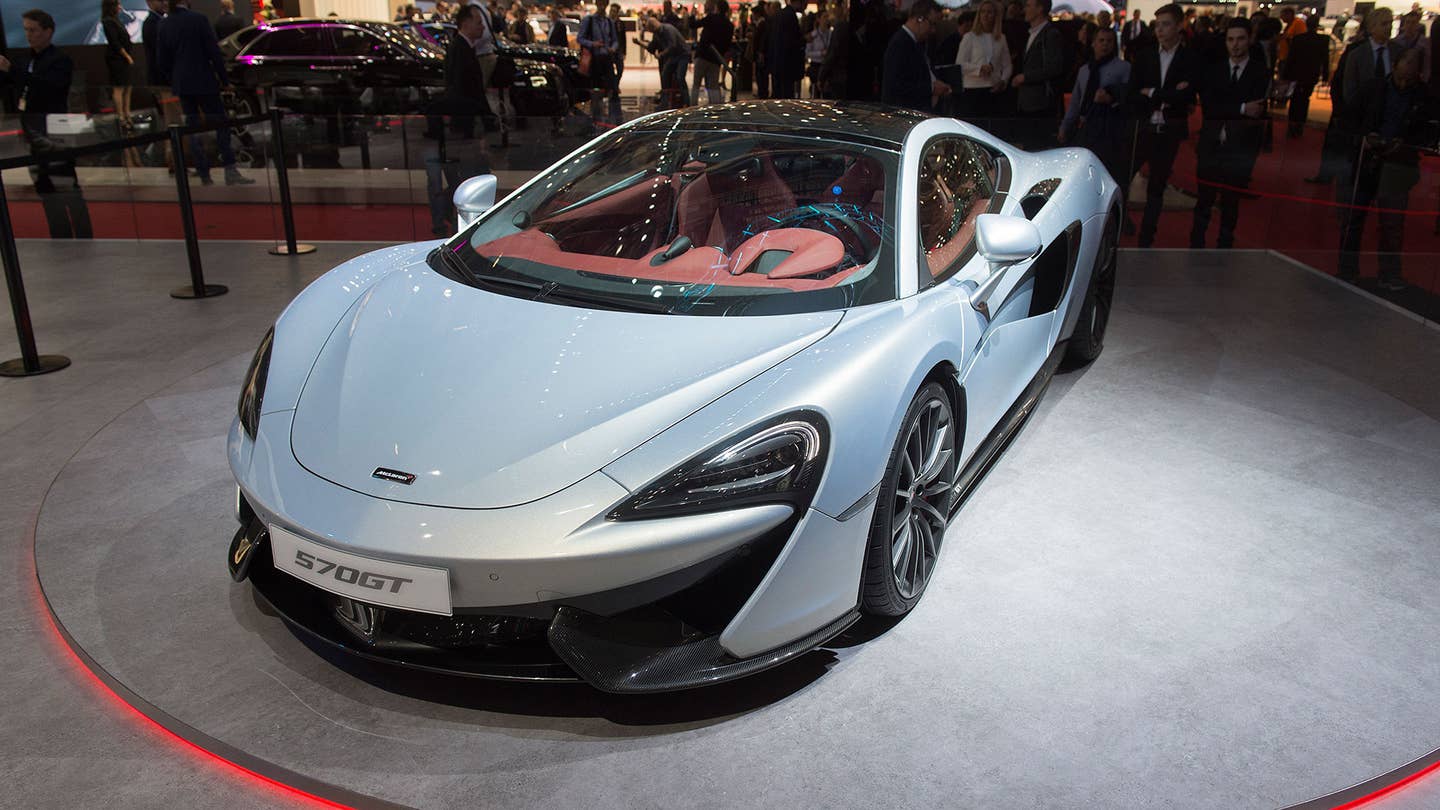Behind the Scenes in Geneva With the McLaren 570GT
Putting the “G” in “GT”.

Ever notice that pretty much every expensive suit at a high-end men's department store has some Lycra in it? It's a concession to comfort; the recent vogue for skinny cuts exists in the same age where adults wear pajamas onto an airplane. We want to have our cake and eat it, too—and we don't want to unbutton our trousers afterward.
The same mentality increasingly applies to our high-performance cars, too. While Porsche or Ferrari can convince monied, track-focused die-hards to pay actually pay extra tens of thousands of dollars extra to delete luxuries like sound deadening and sound systems from their Stradale or GT3 vehicles, most supercar buyers have become accustomed to a certain level of material luxury.
In this increasingly pampered rarefied realm McLaren is known for their focus on specs and weight saving. Their interiors have thus been well rendered but less sumptuous than, say, a BMW i3. But last year they unveiled the marginally less-austere 570S Coupe, the first of their poshed-up Sport Series. Now, in Geneva, they’ve just dialed up the opulence even higher with the reveal of the 570GT.
"If you just keep producing focused, high-performance cars, you miss out on a whole segment of customers," says Frank Stephenson, McLaren's director of design. "This being our 'entry level' car, we needed to make it more accessible."
Intended as an everyday boulevardier or weekend getaway vehicle, the 570GT comes standard with many features that are optional on the 570S. These include heated and power-adjustable seats, soft-close dihedral doors, an electrically adjustable steering wheel, an eight-speaker stereo, and impossibly vigilant parking sensors.
It also comes with features not available on the 570S at all, like a suspension that’s ten to fifteen percent less highly strung, a steering ratio that’s two percent less aggressive, fifteen-spoke alloy wheels that are 300 percent spoke-ier, and a price tag that's seven percent more dear. (The quick math tells us to expect a base price of nearly $200,000.) In addition, the GT hosts a less obstreperous exhaust system, a full-length glass roof, a side-opening glass hatch, a less dissonant allocation of black plastic body panels, and a fully leather-lined cargo compartment.
"We had to give the car more space, as more of a grand tourer," Stephenson says. "But you can't just add a rear luggage compartment to a mid-engine car or you'll end up cooking the chicken or whatever you place back there."
McLaren engineers came up with a design solution, pulling heat from below the engine instead of venting it out above. The engine is the same twin-turbo 3.8-liter V8 (mated to the same quick-shifting seven-speed dual clutch transmission) used in all of McLaren’s current road cars; in the 570GT state of tune, as with the 570S, it produces 562 hp and 443 lb-ft of torque, giving it a sub-3.5 second 0-60 time and top speeding topping out above 200 mph. Wind it out for maximum thrust, but shift short of its 8500 rpm redline for maximum aural pleasure.
According to inside sources, McLaren has been planning a grand touring road car as far back as the 1960s, but never put it into production.
"Our original drawings for a GT were great, but they were almost too pretty. They weren't purposeful enough," Stephenson says. "They added a volume on top of the motor so they were almost like a shooting break, a bread van."
A McLaren Europa? We're glad they waited.
